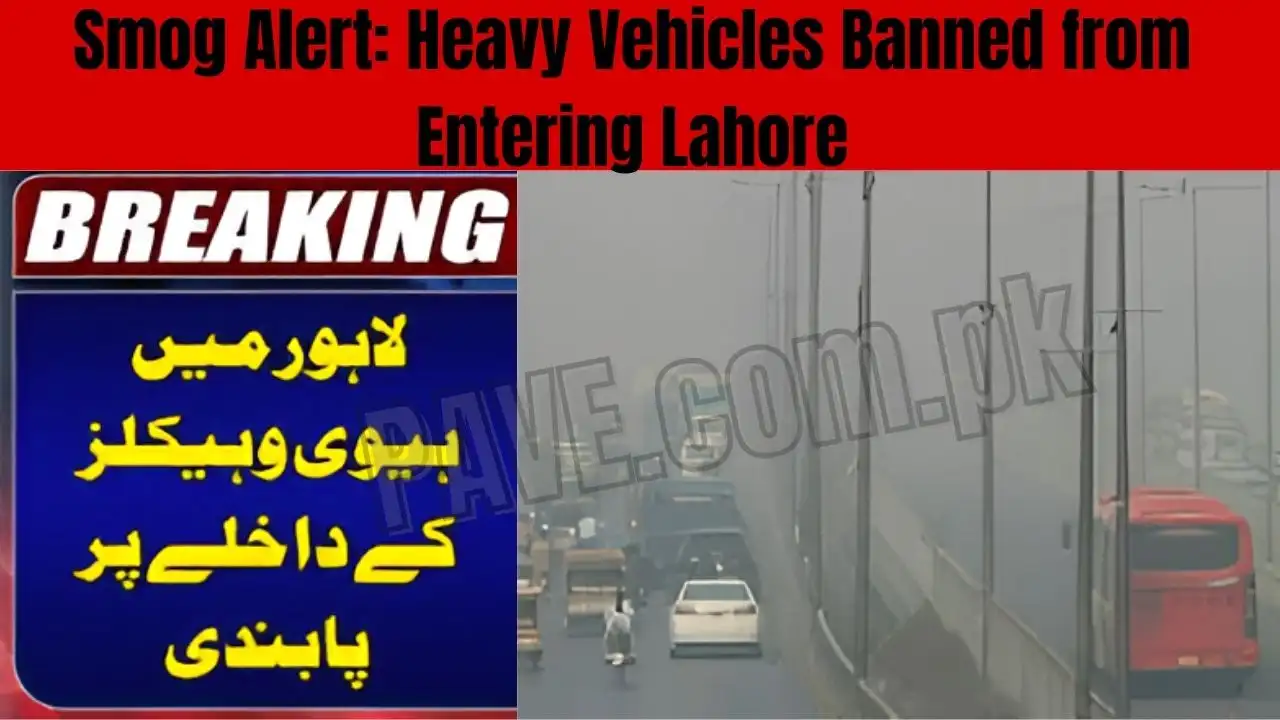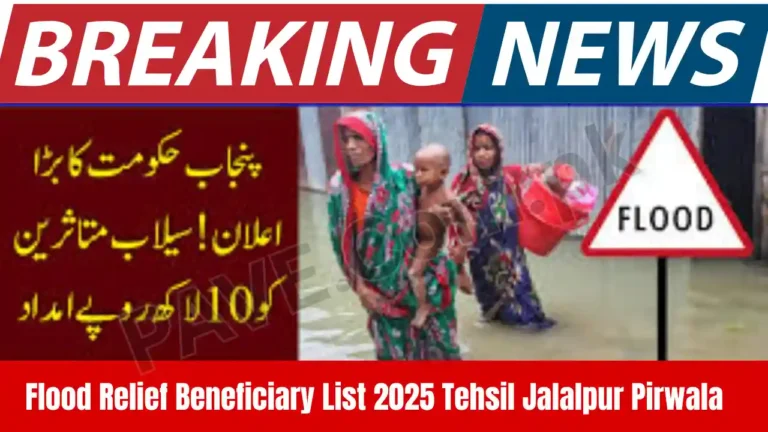Smog Alert: Heavy Vehicles Banned from Entering Lahore
Lahore, Pakistan’s cultural and economic hub, is once again engulfed in thick layers of toxic smog, forcing authorities to ban the entry of heavy vehicles into the city. With the Air Quality Index (AQI) crossing hazardous limits, Lahore has climbed to the top of the list of most polluted cities in the world, surpassing Delhi and Beijing on several occasions this month.Heavy Vehicles Banned from Entering Lahore
As citizens struggle to breathe and visibility drops across major highways, the government has moved swiftly, restricting diesel-powered trucks and trailers in a desperate attempt to slow down rising emissions.
🌫 Smog Situation in Lahore — A Recurring Winter Health Emergency
Every winter, Lahore transforms into a pollution hotspot as industrial smoke, vehicle emissions, crop residue burning, and stagnant weather conditions trap pollutants in the atmosphere.
- On peak days, the AQI in major areas such as Mall Road, Gulberg, Thokar Niaz Baig, and Shahdara crosses 400+, categorised as “Hazardous.”
- Citizens report burning eyes, sore throats, and breathing difficulty, even during short outdoor exposure.
- Morning school runs and evening commutes have become health risks rather than routine travel.
Health experts warn that long-term exposure to smog increases the risk of asthma, bronchitis, heart disease, and even lung cancer.
Read Also: Major Road Link Between Provinces Closed Due to Landslide
🚫 Ban on Heavy Vehicles — A Necessary but Temporary Relief
To tackle the crisis, the Lahore administration has announced a temporary ban on heavy-duty transport vehicles, especially:
- Trucks
- Dumpers
- Trailers
- Diesel cargo carriers
These vehicles are considered major contributors to particulate emissions, especially during late-night and early-morning peak smog hours.
Authorities have redirected such vehicles to Lahore Ring Road and alternate bypass routes. Entry is only permitted for essential supply vehicles like food and medicine carriers, and even they are subject to strict emission checks.
🚦Impact on Traffic, Trade, and Daily Movement
While the ban has helped reduce visible smoke emissions, it has also led to logistical delays, particularly for:
| Sector | Impact |
|---|---|
| Construction Industry | Shortage of sand, cement, and raw materials |
| Wholesale Markets | Late delivery of produce and retail goods |
| E-Commerce and Parcels | Delivery delays across city centers |
| Bus/Van Operators | Rerouted journeys causing longer travel times |
Despite the inconvenience, many commuters have praised the decision, stating that clean air is worth short-term delays.
🩺 Health Experts Issue Advisory — Masks Are Necessary
Doctors from leading hospitals such as Mayo Hospital, Jinnah Hospital, and PKLI recommend:
✅ N95 or KN95 masks instead of cloth masks
✅ Using saline water to wash eyes and nasal passages
✅ Avoiding early-morning walks and outdoor exercise
✅ Keeping inhalers and medications handy for asthma patients
They emphasize that children and elderly people should be kept indoors during high smog hours (5 AM–10 AM & 6 PM–11 PM).
Read Also: Imperial College London’s First Campus in Pakistan – Groundbreaking 2025
🛠 Government Plans for Long-Term Air Quality Improvement
While banning heavy vehicles is a quick-fix approach, the Punjab government is working on multi-dimensional strategies to address the root cause of smog:
| Measure | Status |
|---|---|
| Closure of illegal brick kilns | Ongoing crackdowns in Sheikhupura & Kasur |
| Water sprinkling on busy roads | Implemented on Mall Road & Ring Road |
| Subsidized electric rickshaws & buses | Pilot projects in Lahore & Faisalabad |
| Crackdown on crop burning in Punjab fields | Satellite monitoring in progress |
Officials are also considering a “pollution tax” for factories and transport fleets that fail to comply with environmental standards.
📢 Citizens Demand Sustainable Action, Not Seasonal Panic
While Lahore residents appreciate emergency measures like the heavy vehicle ban, many argue that long-term solutions must replace seasonal band-aids.
Environmental activists highlight that:
“Smog is not just weather — it’s manmade. Until transport, factories, and agricultural policies are reformed, Lahore will keep choking every winter.”
They urge mass plantation drives, stricter vehicle inspection systems, and better public transport alternatives to reduce reliance on smoke-emitting vehicles.
Every year, as winter approaches, Lahore transforms from the “City of Gardens” into one of the most polluted cities in the world. What was once known for historic architecture and vibrant culture is now globally recognized for something far more alarming — toxic smog.
In recent years, Lahore has frequently topped the Global Air Quality Index (AQI) as the most polluted city on Earth, recording AQI levels between 300 to 500, which falls into the Hazardous category. This situation has turned into a public health emergency, forcing schools to close, transport to halt, and hospitals to overflow with respiratory patients.
🌫 What is Smog and Why Lahore is Worst Hit?
Smog is a mix of smoke and fog, caused by vehicle emissions, factory smoke, crop burning, and stagnant weather conditions.
Lahore is more vulnerable due to:
| Cause | Description |
|---|---|
| Traffic Emissions | Old diesel buses, rickshaws, and heavy vehicles produce black smoke |
| Industrial Pollution | Brick kilns, steel mills, and factories release toxic gases |
| Crop Burning | Farmers in Punjab and India burn leftover crop residue |
| Construction Dust | Mega infrastructure projects without proper dust control |
| No Strong Winds in Winter | Pollutants remain trapped near the surface |
📉 Lahore’s Air Quality Index (AQI) – How Bad Is It?
| AQI Level | Air Quality Status | Health Risk |
|---|---|---|
| 0-50 | Good | No Risk |
| 51-100 | Moderate | Mild Risk |
| 101-200 | Unhealthy for Sensitive Groups | Kids & Asthma Patients Affected |
| 201-300 | Unhealthy | Shortness of Breath, Coughing |
| 301-400 | Very Unhealthy | Eye Burning, Throat Irritation |
| 401-500+ | Hazardous | Can Lead to Lung Damage |
In Lahore, AQI often crosses 400-500, making it dangerous to even step outside without protection.
🩺 Health Effects of Smog on Lahore Residents
Doctors have warned that constant exposure to smog can lead to:
- Chronic coughing and sore throat
- Asthma attacks and lung infections
- Heart complications and fatigue
- Eye irritation and headaches
- Increased risk of stroke and cancer in long-term exposure
Children, elderly people, and outdoor workers are most vulnerable.
Read Also: Imperial College London’s First Campus in Pakistan – 2025
🚫 Government Measures to Control Smog
To reduce pollution, the Punjab government has introduced:
✅ Ban on Heavy Vehicles entering the city during peak smog periods
✅ Closure of schools and offices on high AQI days
✅ Shutdown of unsafe brick kilns and factories
✅ Fines on smoke-emitting vehicles
✅ Water sprinkling on roads to settle dust
✅ Promotion of electric buses and e-rickshaws
However, many critics argue that these are temporary solutions and lack long-term strategy.
🧑⚖️ Public Lawsuits & Court Interventions
Lahore High Court (LHC) has repeatedly summoned government officials over rising smog. Environmental activists have filed petitions demanding cleaner policies, urging:
- Air pollution monitoring stations
- Low-sulfur fuel
- Public awareness drives
The court has also suggested declaring Environmental Emergency in Lahore.
✅ How Lahoris Can Protect Themselves from Smog
| Protective Measure | Recommendation |
|---|---|
| Wear Mask Outdoors | Use N95 or KN95 masks |
| Avoid Early Morning & Late Night Travel | Smog is worst during low temperature hours |
| Use Air Purifiers Indoors | Especially in rooms with children |
| Keep Plants at Home | Peace Lily, Snake Plant, Aloe Vera help improve air |
| Stay Hydrated & Use Steam Therapy | Helps flush pollutants |
🌱 Long-Term Solutions to End Lahore’s Smog
Experts suggest that Lahore can only be saved permanently through:
| Solution | Impact |
|---|---|
| Mass Plantation Drives | Trees help absorb pollutants |
| Electric Public Transport | Reduces diesel emissions |
| Eco-Friendly Brick Kilns (Zig-Zag Technology) | Less smoke output |
| Crop Recycling Machines Instead of Burning | Prevents air contamination |
| Strict Industrial Zoning Laws | Move factories outside residential areas |
🏁 Conclusion – Lahore Needs Clean Air, Not Just Seasonal Restrictions
Smog in Lahore is no longer a seasonal inconvenience — it is a yearly disaster that endangers millions of lives. While temporary bans on vehicles and factories help reduce intensity, the city desperately needs sustained environmental policies, strict law enforcement, and public cooperation.
Until then, every winter will remain a fight for breath in the heart of Pakistan.







